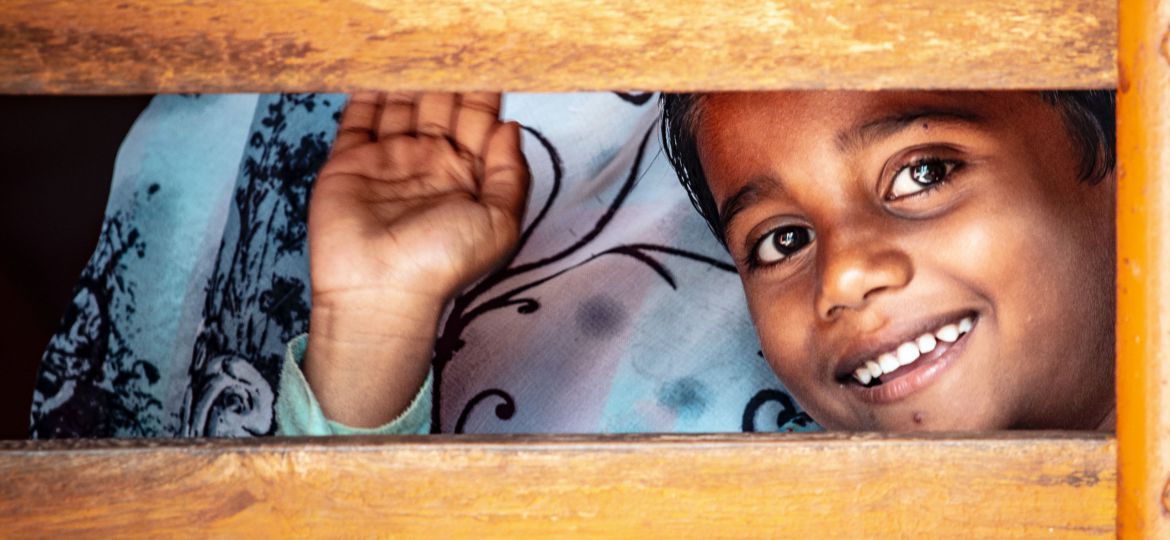
It seems a little incongruous at first to put humour and sexuality together. As children, we looked at humour as just a way to laugh. A shock- absorber. A way to feel lightness in times of heaviness. A way to brighten up a sad face. Our road to humour was through the Joker, or the clown, in a circus. Then, as we grew up, we saw the film Mera Naam Joker and understood there are depths to humour. Today with all my multiple life experiences, I am trying to discern for myself the connections between humour, child safeguarding and sexuality.
Humour is used to speak of sex through allusion and double entendre and has become part of the accepted humour publicised and normalised by mainstream media. However, discomfort with sexuality persists in society and child sexual abuse is disregarded by the majority and considered as being a rare occurrence. A Government of India research study concluded that 53% children were primarily sexually abused by a person they trusted. Yet funnily enough, decision-makers ignore the magnitude and cumulative effects of the impacts of such experiences that children undergo. In fact, till today the right of children to protection is not part of the syllabi of child focussed care courses (counselling, teaching, nursing, etc.). And that is sheer neglect on the part of the educational and management sectors of our country. Not at all funny.
Let’s start at the beginning. From early on, a child is taught that any inadvertent exposure of their genitals is “Shame! Shame! Puppy Shame!” People use words like “Chee!” (a local exclamation that expresses disgust and horror) to let a child know that being naked in public is not acceptable. Children do not even learn the names and parts of their genitals. So, if a person touches their genitals inappropriately, with what words can a child express to a trusted person what is happening? What language do they have? The feeling of shame resulting from being exposed to or listening to sexual words that must not be spoken makes even the reporting of child sexual abuse taboo. Institutional discomfort with sexuality also constructs an environment that does not promote the reporting of sexual abuse.
Most parents, teachers, and caregivers feel embarrassed when talking about sexuality with children and imparting sexuality education. Is there a way to overcome this by using humour? I still remember sharing the story of Adam and Eve with my daughter who was almost two years old. In those “sexuality ignorant” days, I expected her to summarise the story by highlighting Adam and Eve’s disobedience to God. But she turned around and asked, “Mamma, why do Adam and Eve have no clothes on?” Today, I would be able to comfortably use humour with any child asking me the same question, “No clothes? Because they knew how beautiful their body is and it was a hot day!” maybe. Or some other answer using light humour.
Humour can be employed effectively to drive many important points home to support adolescents in making wiser choices.
“I can’t concentrate on my studies very well. I am so much in love.”
“I can see you find it tough to concentrate on your studies. What do you want to do? Imagine repeating these exams again, while the person of your love passes with distinction. Literally passes you by! What’s your choice? Studying and creating a good impression or allowing this person to pass you by? Your choice”. Before this, one can discuss funny ways to remember what we study, and practice how to study in spite of alllll the hormones acting up, with a good dose of humour. Humour here has a positive influence on shaping the safe behaviours that adolescents can choose.
I do agree with the authors of this study that humour moves along a malleable continuum − from good-natured banter to hard-hitting, suicide-inducing abuse. For example, at the toxic end of the continuum, humour maybe used destructively to secure a highly masculine sense of identity. Jokes and humour can modify the appearance of aggressiveness while maintaining male domination. Humour makes it easier to laugh at someone else’s expense, especially if that someone is threatening the security of the other. Adding a dash of the bawdy to humour seems to double its effect. Humour can be mis-used to expose and exploit another person’s distinctiveness or vulnerabilities. Gender non-conforming children and adolescents may face abject cruelty disguised as humour. So-called ‘jokes’ often perpetuate patriarchal control and power relations.
We need to differentiate between humour and abuse. Making fun of situations instead of people is a good start. Humour can provide a way to help children cope with stressful situations healthily. Many an adolescent who did not want to be called a nerd in order to fit in justified studying hard for their Maths papers by humorously commenting, “Another year in this school, no way!” Facilitating children and adolescents to laugh at their own mistakes, inadequacies, and things they cannot change about themselves is a rewarding journey for many teachers and counsellors. Humour is a valuable defence mechanism to cope with horrendous situations. Building empathy so that everyone can recognise what is hurtful and what is humorous, giving everyone the permission to value and label their feelings helps humour to flourish in becoming an effective tool for comprehensive sexuality education. Humour is powerful when sensitively used and helps in overcoming the accompanying embarrassment related to discussions of anything sexual, including responding to why Adam and Eve wear no clothes.
इस लेख को हिंदी में पढ़ने के लिए यहाँ क्लिक करें।
Cover Image: Photo by rajat sarki on Unsplash